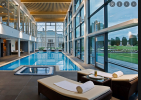Hey Guys,
Hope you're all well.
Wanted to ask you. I've an Air2S and a client asked about me taking some photos of their indoor swimming pool (pictured below).
I know that when indoors the drone won't have (or will have patchy GPS).
The are hoping to have someone swim in the pool and I take footage (photos maybe video too) of them
I'll be sure to not go to close to the water but I'd like your thoughts on anything else I should be aware of
I've asked the client if I could pop down out of hours and do a "trial run" just to ensure it's doable and the drone is stable etc (not sure how stable the drone would be, would the video be jerky?)
I've never flown indoors before - only outdoors
Any thoughts/guidance would be great!

Thanks Ro
Hope you're all well.
Wanted to ask you. I've an Air2S and a client asked about me taking some photos of their indoor swimming pool (pictured below).
I know that when indoors the drone won't have (or will have patchy GPS).
The are hoping to have someone swim in the pool and I take footage (photos maybe video too) of them
I'll be sure to not go to close to the water but I'd like your thoughts on anything else I should be aware of
I've asked the client if I could pop down out of hours and do a "trial run" just to ensure it's doable and the drone is stable etc (not sure how stable the drone would be, would the video be jerky?)
I've never flown indoors before - only outdoors
Any thoughts/guidance would be great!

Thanks Ro










